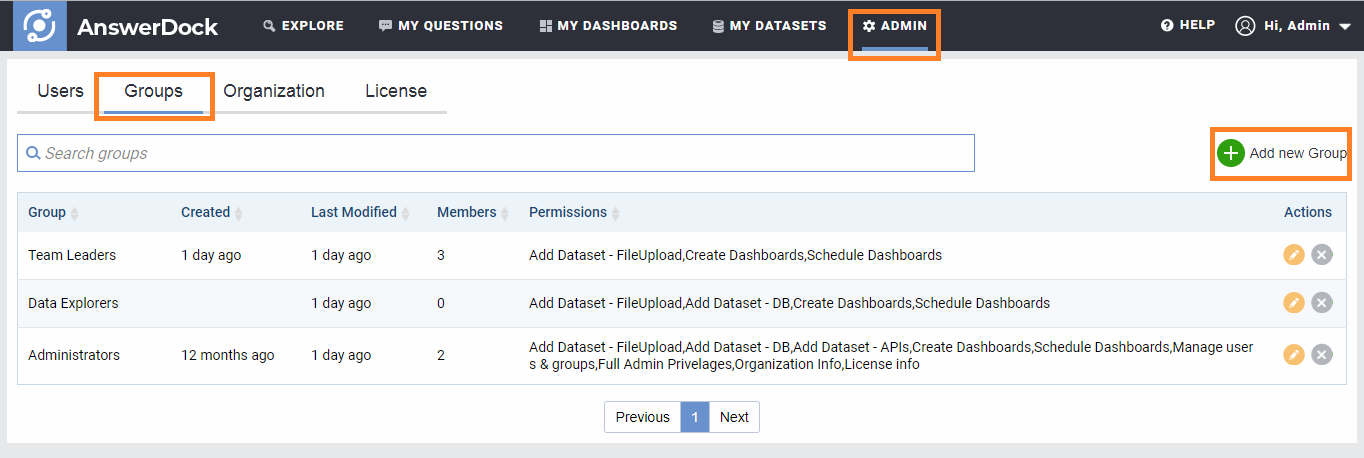Administrators can add, edit, delete, and manage permissions for groups in the Groups Management page.
Accessing the Groups Management Page
The Groups Management page is accessible by clicking on the Admin link in the top header, then opening the groups tab. This page allows users having the “Manage users and groups” privilege to add, edit, delete and manage the permissions for the groups.
Adding a New Group
1- Click “Add new group”
2- In the new group popup, fill the following information:
Group name: The name to of the group.
Sharing Visibility: Sharable groups appear in dashboard and questions sharing menus. If you would like to define a new group that users cannot share any objects with, you can select “Not sharable”. These groups typically are defined for permissions management purposes and are not useful to show for users in the sharing menu of dashboards and questions.
Privileges: Choose from the below privileges:
| Privilege | Description |
| Add Dataset – FileUpload | Upload CSV or Excel Files |
| Add Dataset – DB | Add Datasets with connections to relational DB engine such as Mysql, MSSQL, etc.. |
| Add Dataset – APIs | Add Datasets with connections to application APIs such as Google Analytics |
| Create Dashboards | Create Dashboards |
| Schedule Dashboards | Schedule Dashboards to be sent to a group of users |
| Manage users & groups | Manage users and groups permissions in Admin page |
| Full Admin Privelages | This gives full admin privelages to the group. Users in the group will have access to all functionalities and all datasets on AnswerDock |
| Organization Info | View and edit organization information (name, time zone, etc..) |
| License info | View License Information |
| Billing | Access billing page |
Users: Select the users to assign to this group.
3- Click save.
Editing a Group
In the users list, click on any group to edit the name, sharing visibility, privileges or assigned users.
Deleting a Group
In the groups list, click the delete button for any group. Note that AnswerDock will only delete the group but will keep the users belonging to the group being deleted.


